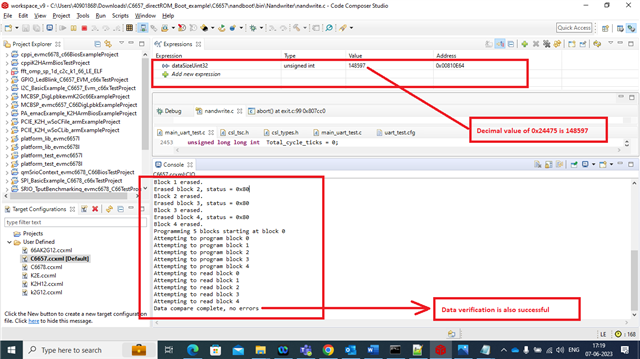Hi team,
1) Using a custom board, NANDFLASH connects directly to C6657 via EMIF, using 1G08 chip, and the boot pin is controlled by FPGA which is always in NAND boot mode. Flash is burned through the official C6657_directROM_Boot_example curing routine.
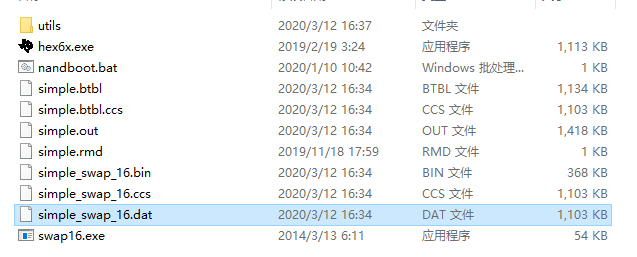
Compile the .dat binary file.

Loading evmc6657l.gel causes the above to occur, so their own .gel script was used later.
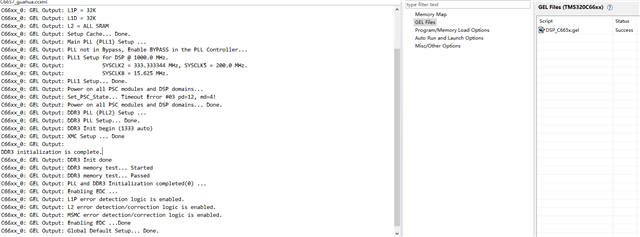
After initialization is complete, load the nandboot.out file, import .dat and modify the number of bytes. After running, it will get stuck.
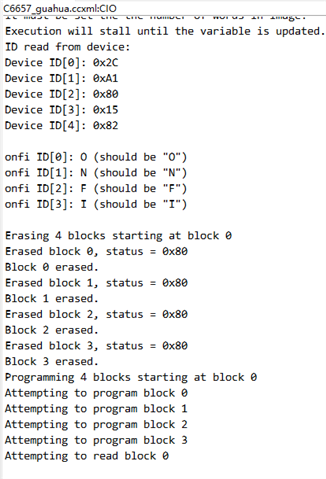
It gets stuck when reading back the status register.
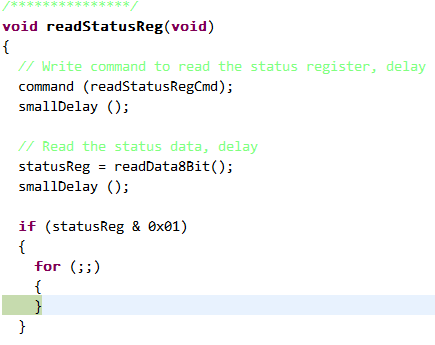
2) The .dat file that is compiled with a flash-driven project starts on page 0 of block 0 and is written to flash by page, with no error in readback. However, the boot still does not start after power cycle and the bootcompleted bit is 0.
Could you help check this case? Thanks.
Best Regards,
Cherry


